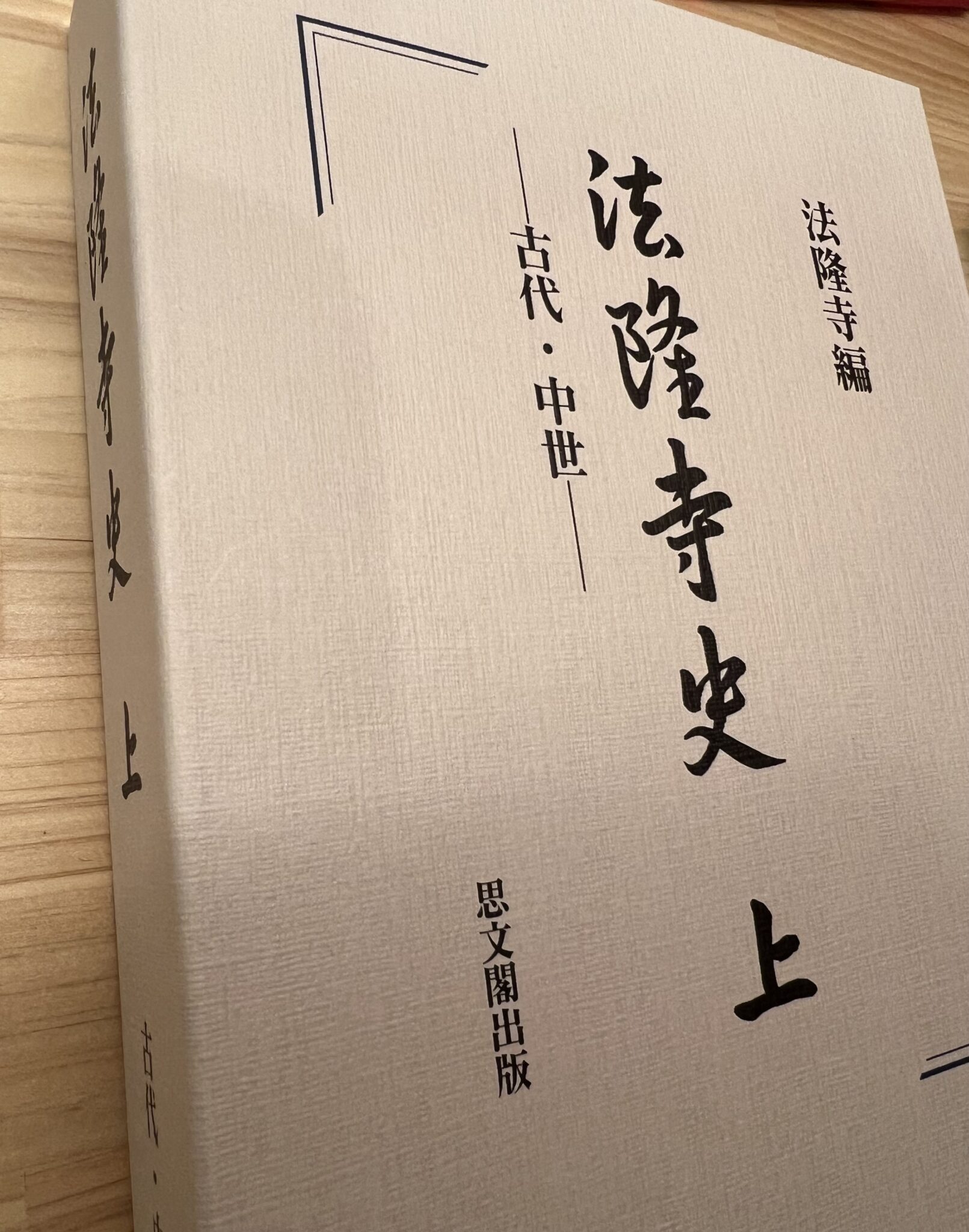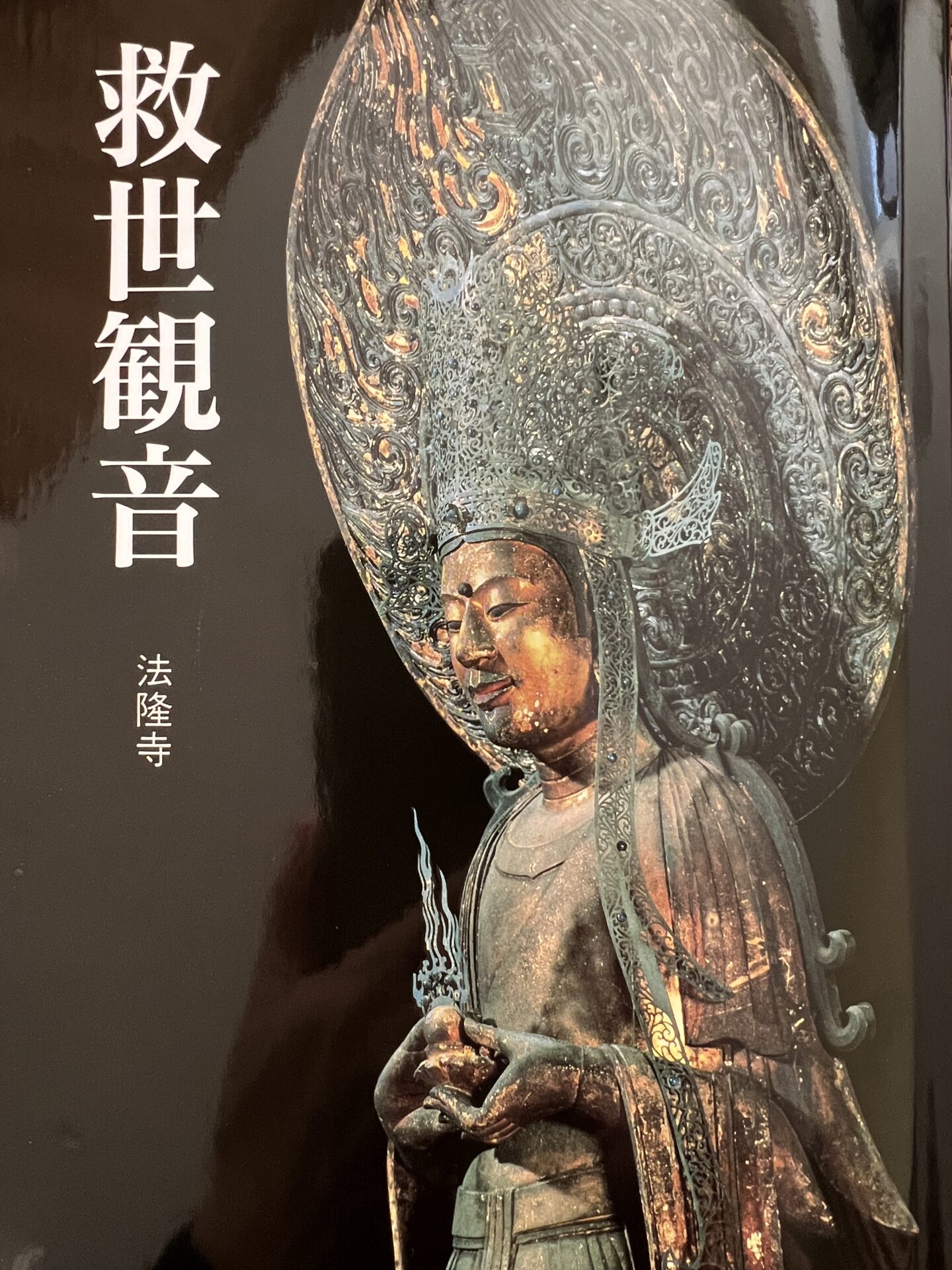Although I have never seen it in person, the Kuse Kannon statue of Yumedono has been the most enigmatic, captivating, and slightly fearsome Buddhist statue in my mind since I was a junior high school student.
But is it truly a Buddhist statue?
In the late Heian period, Kyoto scholar Oe no Chikamichi described his impression of it in Shichidaiji Junrei Shiki (Records of Pilgrimage to the Seven Great Temples):
“It is not a Buddhist statue. It is simply a life-sized figure in a secular form, dressed in court attire.
Looking at its appearance, it is worldly. Looking at its mudra (hand gesture), it is the Kuse Kannon.
Thus, it is understood to be the image of Prince Shotoku.”
Additionally, sculptor Kotaro Takamura remarked that this statue is “no ordinary thing” and went as far as to say that even the most skilled photographer who attempts to photograph this statue might be doomed by the act.
For a long time, I only knew the Kuse Kannon through photographs. Back in junior high school, when I was deeply immersed in Umehara’s historical perspective, this statue carried a somewhat dark image for me. Its unforgettable form has captivated me ever since I first saw it in pictures, but I can’t help thinking that it’s rare for a statue to leave such a different impression depending on the photograph. It’s almost as if the Kuse Kannon indulges the photographer’s intent to capture it exactly as they envision, while simultaneously keeping its true form hidden from everyone.
After years of accumulating knowledge about the Kuse Kannon and becoming overly fixated on it intellectually, I finally had the opportunity to see the actual statue in person after decades of waiting. Today is November 19, leaving just three days until the end of the special viewing period. Early in the morning, I wrapped up my work and headed to Horyuji Temple by car. I parked in the same lot that a friend had recommended to me last time.
The sky was mostly cloudy, but occasional bursts of bright sunlight made the weather pleasantly refreshing. I arrived around 11 a.m., and the temple grounds were packed with schoolchildren on field trips. “Oh no, I came at the wrong time,” I thought to myself, but figured it would likely quiet down closer to noon. So, I leisurely made my way toward the Eastern Precinct.
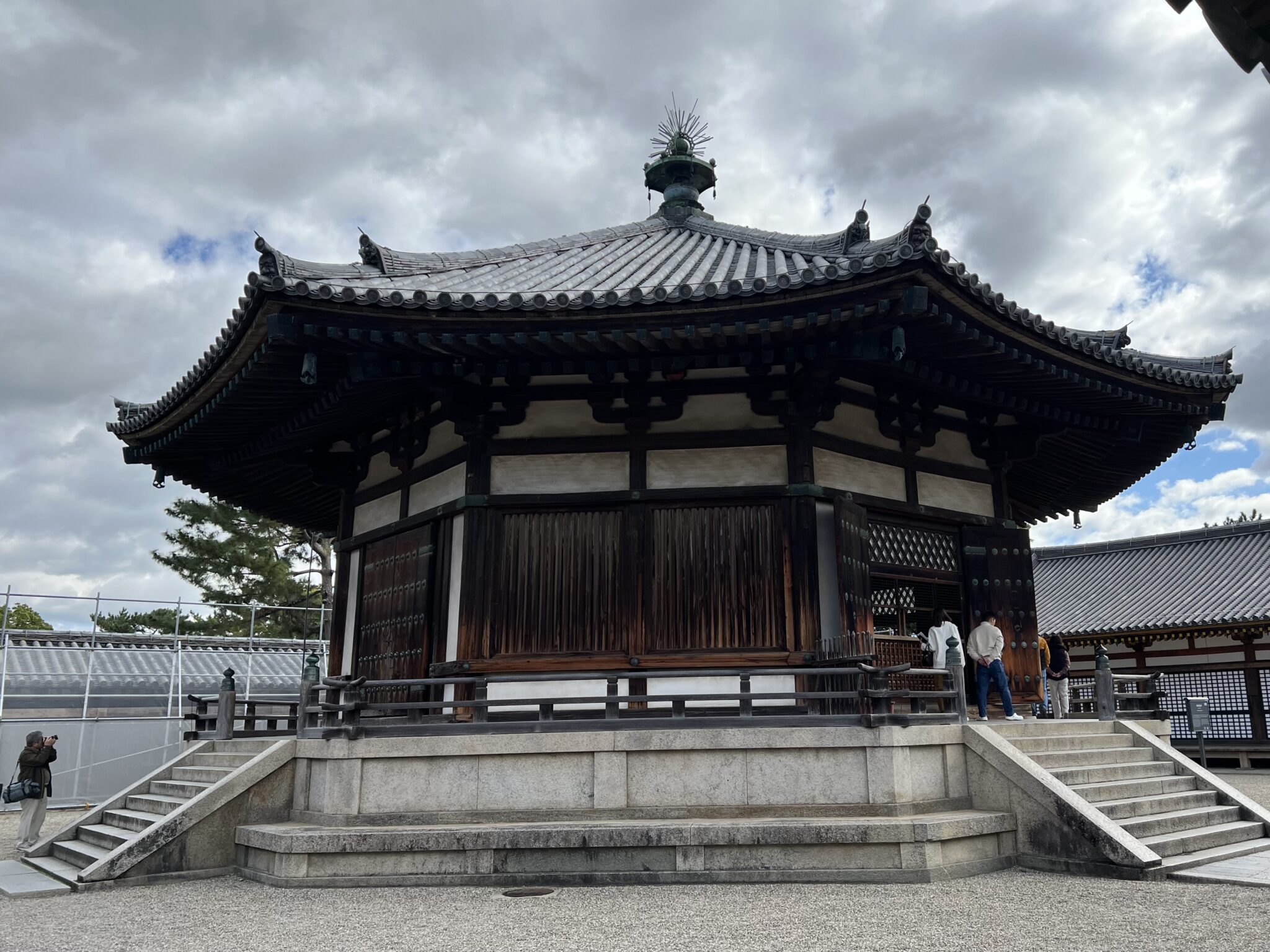
Yumedono is a beautifully elegant octagonal hall, but considering the vast grounds of Horyuji Temple, the Eastern Precinct where Yumedono is located feels rather compact. Luckily, I arrived just as a large group was leaving, so I was able to enter Yumedono without waiting.
I had hoped to view the statue from closer up, but that was not the case. The Kuse Kannon quietly resides in the center of Yumedono, within a large, stately altar, and we visitors can only glimpse its figure by peeking through the latticed screen with wire mesh that surrounds the hall.
The sun was high and dazzlingly bright, and as my eyes adjusted to the darkness inside the hall, it was initially difficult to see anything within the dim interior through the mesh.
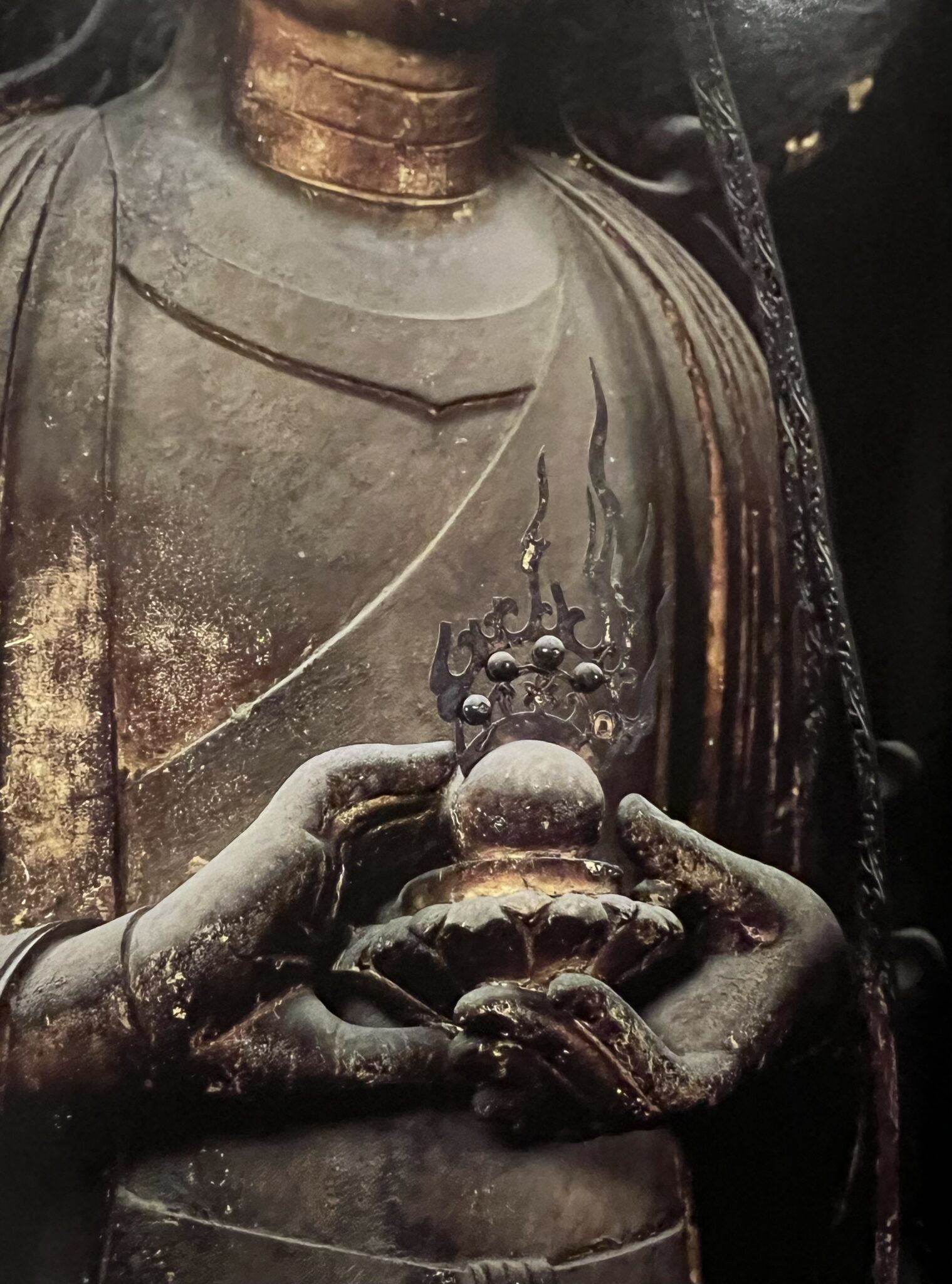
After worshipping the Kannon statue, I stood still and let my eyes adjust to the darkness. Gradually, the golden hues around the hem of the statue began to emerge. The statue was much taller and more slender than I had imagined. The golden areas, faintly glowing in the darkness, slowly expanded upward over time.
Despite being crafted nearly 1,400 years ago (likely), the statue remains brilliantly gilded, thanks to being a hidden Buddha. Although the face was somewhat obscured by the veil within the altar, a little sunlight entered from behind me, shining into the hall. In that moment, I could clearly see the face and even the crimson color of the lips.
The other day, at an event, I heard an interesting discussion about how the “non-human quality” of a Buddhist statue is determined by the nose. Specifically, the shorter and more delicate the nose, the less human-like the statue appears. Thinking about it, that does seem to be the case.
In contrast, the nose of the Kuse Kannon is remarkably large. The lips are also thick, and the wide-open eyes further enhance the impression that the face resembles that of someone of African descent.
What could this mean? If this statue truly represents Prince Shotoku, was this really what he looked like? And even if it were a personal devotional statue brought from Baekje, what kind of model could have inspired this? The mystery only deepens.
Since someone was waiting behind me, I stepped aside to give them a turn. Then, once the area cleared and no one else was around, I took the opportunity to once again gaze upon the figure of the Kannon.
It felt as if I had finally met a rock star I had admired for decades. It was an experience of overlaying the image I had nurtured in my heart for so long with the actual presence of the Kannon before me, letting the two blend together seamlessly. Then, I carefully tucked that cherished experience away in my heart once more.
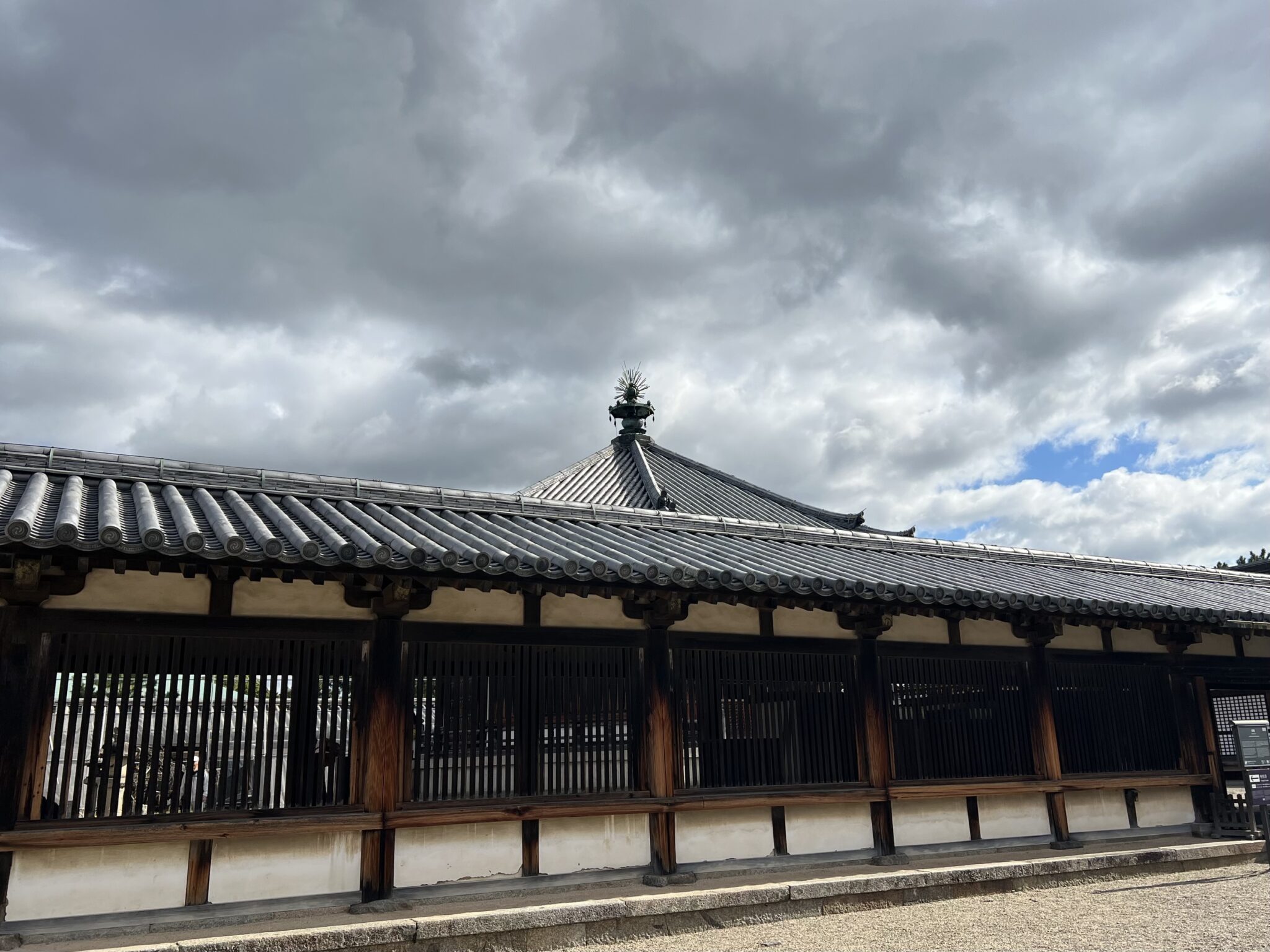
There is so much we don’t know about the Kuse Kannon.
When was it created?
Who made it?
For what purpose was it made?
Was it a devotional statue owned by Prince Shotoku, or a representation of his likeness?
Why was it kept as a hidden Buddha?
Although none of these questions have answers, I deeply resonate with sculptor Kotaro Takamura’s observation:
“One can imagine the creator, with a desperate resolve, crafting this statue all at once in a single burst of effort, in such an extraordinary state that even they were too terrified to gaze directly at their own creation.”
We may know nothing, but it feels undeniable that an overwhelming passion and fervent prayer were poured into it. Just being able to feel that was enough to make me glad I came.
